A collection of videos relating to the diagnosis and treatment of eye movement disorders. This collection includes many demonstrations of examination techniques.
Dan Gold, D.O., Associate Professor of Neurology, Ophthalmology, Neurosurgery, Otolaryngology - Head & Neck Surgery, Emergency Medicine, and Medicine, The Johns Hopkins School of Medicine.
A collection of videos relating to the diagnosis and treatment of eye movement disorders.
NOVEL: https://novel.utah.edu/
TO
| Title | Description | Type | ||
|---|---|---|---|---|
| 26 |
 |
Semicircular Pathways | Once the semicircular canal fibers leave the peripheral labyrinth, they synapse in the ipsilateral vestibular nucleus, and then ascend to the ocular motor nuclei. This enables the vestibulo-ocular reflex to respond to head movements in the plane of any canal or combination of canals. | Text |
| 27 |
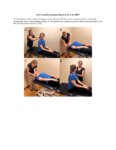 |
Short Canal Repositioning Maneuver for Anterior Canal BPPV | The Short Canal Repositioning Maneuver is used to treat anterior canal BPPV. 1. The patient's head is rotated 45-degrees towards the affected side. 2. The patient's maintains head in a 45-degree position and enters a head hanging position (40 degrees below the horizontal). 3. The patient then mainta... | Text |
| 28 |
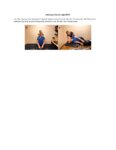 |
Side-lying Test for Right BPPV | The side-lying test is an alternative for the Dix Hallpike Test as it reduces the need for cervical extension. The interpretation of a positive test is the same as the Dix Hallpike Test. | Text |
| 29 |
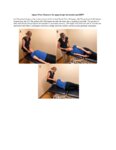 |
Square Wave Maneuver for Apogeotropic Horizontal Canal BPPV | The square wave maneuver is designed to treat individuals with horizontal canal cupulolithaisis and is commonly used when individuals have cervical restrictions and the affected side is not well identified at baseline. 1. The patient begins in the supine position with the head 20 to 30 degrees above... | Text |
| 30 |
 |
Summary of the Most Common Audio-Vestibular Testing | Chart describing common audio-vestibular testing. | Text |
| 31 |
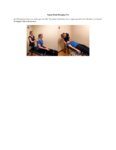 |
Supine Head-Hanging Test | The supine head-hanging test is more sensitive for AC-BPPV, but it does not differentiate laterality, as both canals are stimulated at the same time [1-3]. When the individual returns to a seated position, the otoconia should hypothetically move closer to the utricle, which continues their ampullofu... | Text |
| 32 |
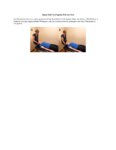 |
Supine Roll Test/Pagnini-McClure Test | The supine roll test or the Pagnini-McClure Test is used to assess for horizontal canal benign paroxysmal positional vertigo. A test is positive when a patient reports vertigo, dizziness, or sensation of movement or falling with nystagmus present. Apogetropic nystagmus is indicative of cupulolithias... | Text |
| 33 |
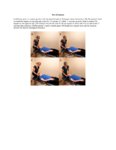 |
Test of Latency | The Test of Latency is used to identify which side is involved for patients with horizontal canal BPPV and is used in conjunction with the Supine Roll Test. For canalithiasis, lateralization is considered the side with a shorter latency time. For cupulolithasis, lateralization is considered the side... | Text |
| 34 |
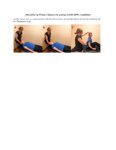 |
The Affected-Ear-up 90 degree Maneuver (HC-Canalithiasis) | The Affected-Ear-up 90 degree Maneuver is used to treat horizontal canal-canalithaisis. 1. The patient starts in a supine position. 2. The patient rotates their head 90 degrees towards the unaffected side. 3. The patient sits up. | Text |
| 35 |
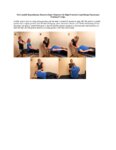 |
The Canalith Repositioning Maneuver/Epley Maneuver for Right Posterior Canal Benign Paroxysmal Positional Vertigo | Posterior canal (PC) accounts for 70-90% cases of BPPV [1-3] and resolves with canalith repositioning maneuvers 90% of the time [4-20]. The Epley maneuver is considered a gold-standard treatment, with class 1 evidence for use. | Text |
| 36 |
 |
The Gans Maneuver for Right Posterior Canal Benign Paroxysmal Positional Vertigo | This maneuver is recommended for individuals with cervical restrictions or precautions, as the maneuver avoids cervical hyperextension and may reduce cervical pain associated with repositioning maneuvers. The Epley maneuver has higher subjective and objective success rates compared to the Gans maneu... | Text |
| 37 |
 |
The Kim Maneuver for Right Horizontal Cupulolithiasis | The Kim Maneuver is used to treat horizontal canal cupulolithiasis cases where the otoconia may be located on either side of the cupula. 1. The patient begins in a supine position. 2. The patient's head is turned 135 degrees towards the affected side and oscillation is applied to the affected side f... | Text |
| 38 |
 |
The Most Common Audiovestibular Laboratory Tests, and the Specific Conditions in Which They May Assist in Making or Supporting the Diagnosis | VN = vestibular neuritis; VM = vestibular migraine; VP = vestibular paroxysmia; vHIT = video head impulse test; VNG = video-nystagmography; ENG = electronystagmography; VOG = video-oculography; VEMPs = vestibular evoked myogenic potentials; SCDS = superior canal dehiscence syndrome; BPPV = benign pa... | Text |
| 39 |
 |
The Most Common Vestibular Conditions Categorized by Timing and Triggers, with Specific Historical Features that Should be Sought for Each (Adapted from Approach to the Ocular Motor and Vestibular History and Examination) | Adapted from https://collections.lib.utah.edu/ark:/87278/s64x9bq1 | Text |
| 40 |
 |
The Most Common Vestibular Conditions Categorized by Timing and Triggers, with Specific Ocular Motor and Vestibular Features that Should be Sought for Each | HINTS+ = Head Impulse, Nystagmus, Test of Skew, ‘Plus' bedside assessment of auditory function; HIT = head impulse test; NP = nerve palsy; BPPV = benign paroxysmal positional vertigo; SCDS = superior canal dehiscence syndrome; BVL = bilateral vestibular loss; PPPD = persistent postural perceptual ... | Text |
| 41 |
 |
Vertical Vergence and Fusional Amplitude | Essential information on vertical fusional vergences. | Text |
| 42 |
 |
Vestibular Evoked Myogenic Potentials (VEMPs) | 𝗢𝗿𝗶𝗴𝗶𝗻𝗮𝗹 𝗗𝗲𝘀𝗰𝗿𝗶𝗽𝘁𝗶𝗼𝗻: Vestibular-evoked myogenic potentials (VEMP) are electromyographic potential reflex tests that reflect the function of the saccule in cervical VEMP and the utricle in ocular VEMP.1 In the cervical VEMP an inhibitory refle... | Text |
| 43 |
 |
Video Head Impulse Testing | 𝗢𝗿𝗶𝗴𝗶𝗻𝗮𝗹 𝗗𝗲𝘀𝗰𝗿𝗶𝗽𝘁𝗶𝗼𝗻: The video head impulse test (vHIT) is a clinical assessment technique used to assess the function of the semicircular canals-the angular acceleration detectors-which initiate the vestibulo-ocular reflex (VOR). The HIT and... | Text |
| 44 |
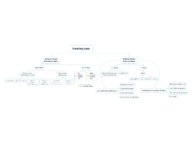 |
What is the Cause of My Patient's Hearing Loss? | This is a flowsheet differentiating multiple causes of hearing loss. The onset and chronicity of hearing loss is a critical starting point in understanding whether urgent action is needed, such as in the setting of suspected stroke or sudden sensorineural hearing loss. For hearing loss that has been... | Text |
| 45 |
 |
Yacovino Maneuver or the Deep Head Hanging Maneuver for Anterior Canal Benign Paroxysmal Positional Vertigo | The Yacovino maneuver is used to treat anterior canal benign paroxysmal positional vertigo (AC-BPPV) and does not require the clinician to distinguish which side is involved. Additionally, when the patient completes cervical flexion, the motion may cause otoconial debris to enter the posterior semi... | Text |
| 46 |
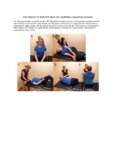 |
Zuma Maneuver for Right Horizontal Canal Cupulolithiasis (Apogeotropic Nystagmus) | The Zuma Maneuver is used to treat horizontal canal cupulolithiasis (apogeotropic nystagmus). 1. The patient begins in a seated position. 2. The patient transitions quickly to lying position on their affected side, with their head in neutral, and maintains this position for three minutes. 3. The pat... | Text |
